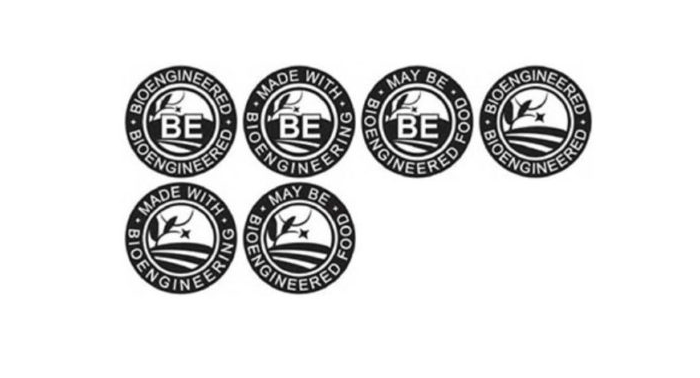The National Bioengineered Disclosure Law (NBDL) for labeling foods containing genetically engineered ingredients is complex and is likely to confuse consumers, says Gregory Jaffe, biotechnology project director at the Center for Science in the Public Interest.
Speaking at the Organic & Non-GMO Forum in October in St. Louis, Jaffe said the final law must answer many difficult questions.
“How difficult will this law be for consumers to understand?” Jaffe asked.
The draft NBDL published last May generated 14,000 public comments. The final law is scheduled to be published in early December.
Bioengineered or GMO?
One of the most contentious issues raised by the NBDL is the use of terms for genetic engineering. The U.S. Department of Agriculture, which is developing the law, prefers the term “bioengineered,” and that has made many people unhappy.
“Many stakeholders and food companies would prefer ‘GMO,’ ‘GM,’ or ‘genetically engineered,’ Jaffe said.
The USDA initially introduced proposed “BE” (bioengineered) labels that featured smiley faces, which were roundly criticized.
“Most stakeholders didn’t like the labeling options. No one loved any of them,” Jaffe said.
A few months later, the USDA release another set of BE labels. All the labels contain the word “bioengineered” and included several options: “bioengineered,” “may be bioengineered food,” “made with bioengineering,” and “derived from bioengineering.”
But Jaffe asked “Will food companies use any of these symbols?”
Food companies can also disclose GMO ingredients using USDA-approved label text, a QR (quick response) code, a digital or electronic link, and small manufacturers can use an 800 number on packaging.
Many companies already use QR codes. “There are thousands of products that use this option now,” Jaffe said.
Several companies such as General Mills, Mars, and Campbell’s use labeling statements such as “Produced with Genetic Engineering” or Partially Produced with Genetic Engineering.”
GMO labeling advocates oppose the use of QR codes because they must be read with smart phones, which many consumers don’t have, and because many consumers won’t take the time to pull out a smart phone to read them. USDA’s own research has confirmed that claim.
Labeling of refined ingredients, gene editing
Another question that must be resolved is whether the NBDL will require labeling of products containing highly refined ingredients such as oils made from corn or soybeans, sugar from GMO sugar beets, and starches made from corn.
Jaffe said some countries such as Japan, Australia, and New Zealand exclude such ingredients from labeling but the European Union requires labeling of them.
The Grocery Manufacturers Association recommends labeling refined ingredients and says that if they aren’t, 78 percent fewer food products would contain GMO labels.
“The USDA hasn’t taken a position but the NGO community, food manufacturers and retailers say they should be disclosed, and Congress aimed that these be disclosed,” Jaffe said.
Jaffe believes that USDA will require disclosure of these ingredients, and if they don’t, then some food companies will voluntarily disclose them.
Then there is the question of whether foods produced using gene editing will be subject to labeling. The National Organic Standards Board has recommended that gene editing, like older genetic engineering methods, be considered an excluded method in organic food production.
But Jaffe says the decision to require labeling of gene-edited products will come down to the USDA’s definition of “bioengineering” and that gene editing won’t fit that definition.
“USDA won’t include gene editing,” he says.
He also predicts that there will be lawsuits if USDA exempts gene editing from labeling.
GMO thresholds
Another major issue to be resolved is the NBDL’s threshold for labeling. Jaffe said the proposed law has three options: 1) BE substance in an ingredient that is inadvertently or technically unavoidable and accounts for less than 5 percent of the ingredient by weight. 2) Same as the first but 0.9 percent by weight. 3) Allow use of BE ingredients in a food product as long as they are not greater than 5% of the total weight of the product (this allows use of known BE ingredients).
GMO thresholds in other nations include 0.9 percent in Europe, 5 percent in Japan, and 3 percent in South Korea.
Jaffe says the food industry favors the 0.9 percent threshold, which is the standard in Europe and has become common in the grain industry also.
“Many stakeholders want 0.9 percent because it captures the most products, meets consumer expectations, and is consistent with other standards (Europe, Non-GMO Project),” he said.
Then there is the question of non-GMO claims, which many companies are making particularly with Non-GMO Project verification. Jaffe said the NBDL says a food may not be considered “not bioengineered,” or “non-GMO” “solely because the food is not required to bear a disclosure that the food is bioengineered under this subtitle.”
Jaffe said this confusing provision highlights the need for a national non-GMO labeling standard.
He says consumer education will be needed to clarify the NBDL, the terms and symbols used, accessing information electronically, and exemptions and exclusions.
Jaffe predicts: “There will be a lot of consumer confusion.”








